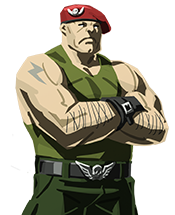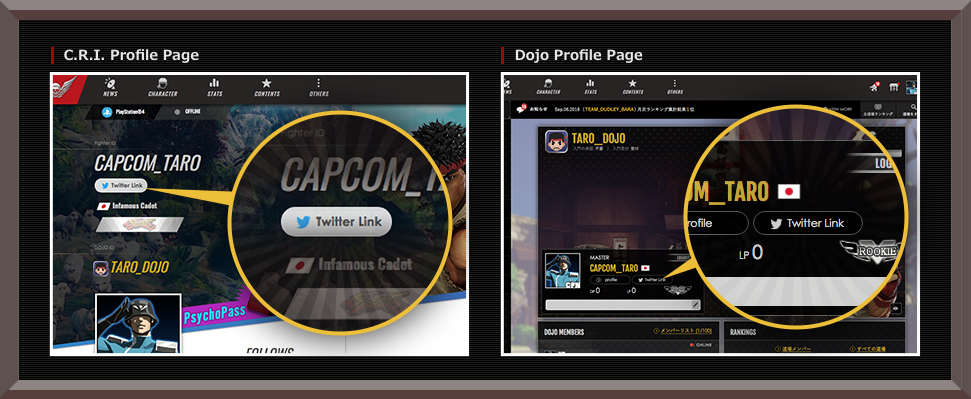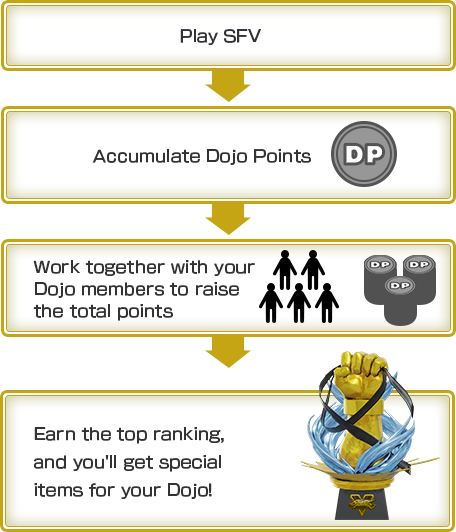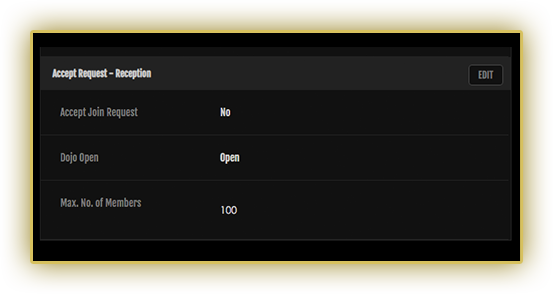Expert Course: Getting Max Enjoyment out of SFII Combos
Hello everyone, it's the skill smith and your SF Seminar lecturer, Mr. Bug here.
As a part of the Street Fighter 30th Anniversary celebration plans, I'd like to hold this special lecture on "Getting Max Enjoyment out of SFII Combos."
In this article I'll be talking about combo points and techniques for the SFII series as a whole, and for each of the respective games, using "Hyper Street Fighter II." While HSF2 tries to recreate the arcade versions of each SFII game, please keep in mind that there will be some differences in the specifications and behaviors with the console versions (like the SNES version of SFII).
The Basics: SFII Special Move Cancels
In SFII, in order to perform special moves more easily, the game has a system that allows special moves to overwrite the startup animation of normal moves. Another way to look at it is that you can still get the special move even if the timing of your button press is a little off. Thanks to this system, if there was a move where the active frames kicked in before the end of the "grace period," the normal move would hit, then the special move would overwrite it. We felt this was interesting, so we left it in, hit-canceling was born, and the rest is history.
Although not frequently used, this "grace period" window of frames where the animation could be overwritten is called the "cancel timer." The only moves that can be canceled are the ones with a startup within the cancel timer, so in SFII there are no moves with slow startup that can be canceled.
Until Super SFII there were no changes to the cancel timer - for example, the window was a universal 4F. However, from SSFIIT some changes were introduced. Additionally, not only were there differences between the characters, there were differences between the different versions of the character (the "new" characters who could perform super combos, and the "old" ones who couldn't), as well as a different timer for the super combo. Talk about complicated!
...But, if you memorize the basics, just like memorizing which moves can be canceled in other games, then you should be fine.
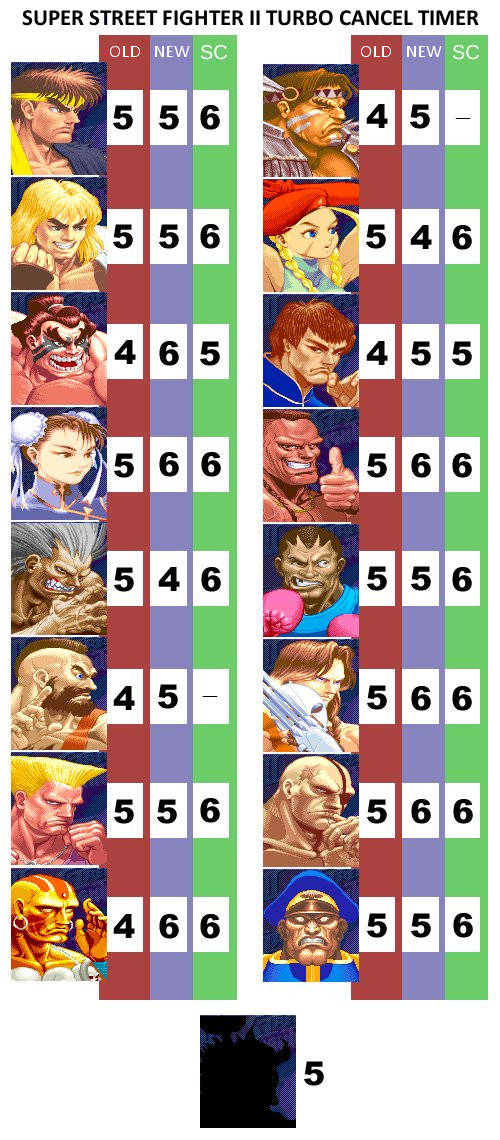 A table showing the cancel timers for the SSFIIT characters. For reference.
A table showing the cancel timers for the SSFIIT characters. For reference.The Basics: SFII Renda (Chain) Cancels
[The only thing that can link to a renda cancel is the same button.]
As written above, the only move that can link to a renda cancel is the same button. If you're doing it with LP, only LP will link. If with LK, then LK. You can't do something like C.LK -> C.LP.
[If using the same button, linking from a rapid cancel move to a non-rapid cancel move is possible.]
For example, for Fei Long, close LK is a renda cancel move, while C.LK is not. So while close LK -> C.LK is possible, the reverse is not.
[A special move cannot be cancelled from a renda cancel move that doesn't change the status.]
When canceling a special move from an attack that came from a renda cancel, a cancel can only be performed immediately following a move where the status was changed from standing to crouching, or from crouching to standing.
If immediately after a status change, any number of moves can be canceled, however two or more cancels cannot be performed under the same status, even if there was a change.
So the cancel will work for C.LP x 4 -> S.LP, but it will not work for C.LP x 3 -> S.LP x 2.
As an exception to the rule, original (Old) Guile cannot take advantage of special move cancelling even if he changes the status upon renda cancelling.
The Basics: Various Things about Getting Hit
[Special moves will force an opponent to stand.]
For special moves that don't cause a knockdown (the original Shoryuken or projectiles like the Hadoken), they will cause a crouching opponent to stand on hit.
An exception is the moves that cause fire damage (such as Dhalsim's L Yoga Fire from Super onwards), as there was a crouching burning motion made for these moves, they won't force a stand. Also, the first hit only of Ken's H Shoryuken will force a crouch (make a standing opponent crouch), which is a bit of a weird property.
The crouching fire damage state opens up some dream-like possibilities, so don't forget about it.
The float time for a knockdown is shortened in the corner.
In SFII, when an opponent is airborne following a knockdown, etc., once they hit the corner they immediately begin their descent. If you knock an opponent down in the corner, their float time will be considerably shortened.

I'd like to extend the float time to make for easier air juggle combos, but in the center of the screen they'd end up flying far away, so distance adjustments are necessary based on the combination of factors.
[For jump attacks, the higher the attack hits the closer you'll be to your opponent.]
You'd think hitting the jump attack as deep as possible is better for comboing afterwards, but in reality, the higher the attack hits the closer you'll be to the opponent.

Keep in mind that if the opponent does an attack (such as an uppercut) that extends their height they also extend their hurtbox, which means they can be hit from higher up, which can lead to an even closer distance.
[Hit stun is reduced by 1F for hits after the second combo hit.]
In SFII, if a hit connects into a combo, the hit stun from the second hit onward is reduced by 1F. The correct way to think about it is if an attack hits during some movement motion, the hit stun is reduced by 1F. This also includes the interval between hits.
The hit stun is not reduced by 1F per combo hit. Just that during the combo, the hit stun is 1F less than what it usually would be.
For example, LP -> LP might just barely connect outside of a combo, but if you tried to do it as part of a combo, it won't connect.
[When getting hit by attacks that can't be blocked low, the pushback and hit stun time changes depending on the status when getting hit.]
This applies to all jump attacks, and certain unique attacks such as Ryu's Collarbone Breaker, which cannot be blocked low. If the opponent gets hit with the attack while standing, the pushback and hit stun time will correspond to that of light attacks. If they're crouching, then the pushback and hit stun will correspond to that of heavy attacks.

If blocked, the block stun and pushback will correspond to the parameters for the attack strength used.
[When Honda and Blanka are getting combo'ed while crouching, they'll stand from the 2nd hit.]
For these two characters, their motion attributes for crouching damage (attributes, not hitboxes) are for standing, so upon when they get hit with an attack, it'll count for standing damage.
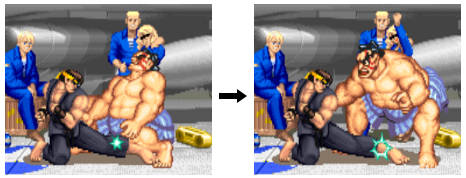 Honda getting hit with 2 light kicks. He stands for the 2nd hit.
Honda getting hit with 2 light kicks. He stands for the 2nd hit.
For example, if a crouching Honda gets hit by cross-up jump medium kick into crouch medium kick from Ryu, Honda will stand upon getting hit by the crouch medium kick. Ryu can then cancel into his Tatsumaki, which normally misses on crouching opponents, but will hit the standing Honda here.
This is something that existed from the first iteration of the game to Super Turbo. It's a tradition.
And for a fun fact, since crouching fire damage all shares the same attributes, both Blanka and Honda will continue to crouch upon getting hit with a second attack from crouching fire damage.
[For the Old/New characters in Super Turbo, their hit stun time is short, and they go into pushback on hit quicker.]
For all the characters from Super SFII Turbo (Old and New, also referred to as "X" and "XS" in Japan), their hit stun time is 1F shorter, and the time at which they start to go into pushback on hit is 1F faster (the pushback distance is the same).
You might not immediately understand the effects of going into hit pushback quicker, but when linking attacks through cancels (such as special move or renda), the increase in speed leads to an increase in separation distance.
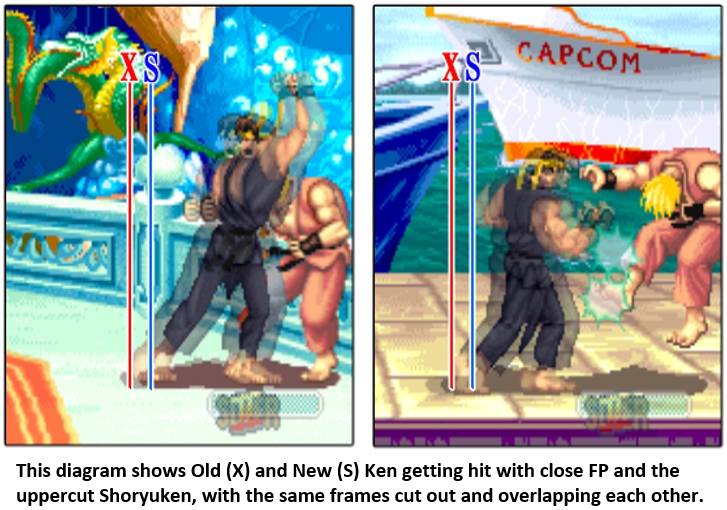
Getting to the heart of the matter, since it's harder to connect combos on them, Super Turbo characters aren't often used as combo dummies in Hyper SFII. However, there are some cases where the quicker pushback on hit serves for a specific function.
By the way, this isn't something that was just added to the Super Turbo characters in Hyper SFII, it's a recreation of an overall system change that had originally been made in Super Turbo. When two ST characters are fighting against each other, the system behaves in the same way as it did in ST, but when you have a ST character fighting against a non-ST character, you'll start to see some disparities in how combos work.
The Basics: Various Things about Damage
[There is a random element to how much damage and stun is dealt.]
The random range is pretty wide, so when you're putting together a combo and want high/low damage or stun, you just have to pray for the desired results.

[The stun system changes depending on type.]
The hit stun time and distance are dependent on the opponent side, but the attacker is in possession of the stun system, and the method of calculating stun value when attacking a dizzied opponent varies depending on the type.
Original (normal): An attack that connects while the opponent is dizzied will not contribute to the stun value.
All others: Attacks that hit during a set amount of time from the onset of stun will not contribute to the stun value.
If you're using an original character and you dizzy your opponent, only the first attack you land while the opponent is stunned will not contribute to the stun value. Since it's only the first hit, the second hit onwards regularly contributes to the stun value. The original characters could dish out massive stun, so it was relatively simple to hit a combo that would put the opponent in a stun state again without giving them a chance to recover. This is commonly called a re-dizzy.
For all other characters, once the opponent has been stunned, you won't deal anymore stun damage to them for a fixed amount of time. Thanks to this it's pretty difficult to hit a re-dizzy combo - you'd need to land a fairly long combo.
Basically, with an original character, once the opponent recovers they'll take stun damage normally, and for all other characters, even after recovering from dizzy, the opponent will not take stun damage for a fixed amount of time. The concept of "in a state where the opponent has quickly recovered from dizzy and is still not taking stun damage, you can increase the time in which you can move the opponent" is pretty important, so let's keep that in mind.
The Basics: The SFII Air Combo System
In Hyper SFII, only ST had an air combo system. The system is simple - "if the opponent is knocked down by a move that has air combo ability, they can be hit with an air combo count combo attack." Take note that air combo attacks aren't possible if the opponent is knocked down by a move that doesn't have air combo ability.
The following is a list of moves that have air combo properties.
Ryu: diagonal jump MP (2), Shinkuu Hadoken, except for the last hit (4)
Ken: Shoryu Reppa (4)
Honda: Super Killer Head Ram (4)
Chun-Li: Tenshokyaku (2), Senretsukyaku (4)
Blanka: Ground Shave Rolling (4)
Guile: Double Somersault Kick (4)
Dhalsim: Yoga Inferno (4)
Cammy: Spin Drive Smasher (4)
Dee Jay: M, H Jackknife Maximum (2), Sobat Carnival (4)
Fei Long: Rekkyukyaku (2), Rekkashinken (4)
Balrog: Crazy Buffalo: (4)
Vega: Scarlet Terror: (2)
Sagat: H Tiger Uppercut (5), Tiger Genocide (5)
M. Bison: diagonal jump MP (2), Knee Press Nightmare (4)
Akuma: Goshoryuken (2), M, H Tatsumaki Zankukyaku (2), Airborne Tatsumaki Zankyukyaku (2)
Special Technique: Super Combo Cancels (ST)
When canceling a move into a special move, usually you perform the attack to be canceled, and input the special move command while the opponent is in hit stun. However, this method does not work for super combo cancels in ST. I guess, if you input the super combo command super-fast on the next frame after the preceding move, it might work... (we're talking input the command before the attack hits fast), but realistically the input is not a matter of speed.
The easiest way to do it is to perform the move to be canceled into the super combo, while you're doing the super combo input.
Using Ryu's crouch MK into Shinkuu Hadoken as an example...
D, DF, F, D+MK, DF, F+P
Inputting the cancel move as late as possible into the super combo command makes it easier.
D, DF, F, D, DF+MK, F+P
Basically, at some point during the Shinkuu Hadoken command, input the MK during one of the down or down forward inputs.
With this type of mixed input, depending on the move you want to cancel, we have the issue of potentially getting a different move to come out. In order to avoid this, the input time for super combo commands is extremely long. For example, if you want to cancel Ryu's standing HP, the motion would be D, DF, F+HP, D, DF, F+P. However, quickly inputting the motion would result in getting H Hadoken, so upon entering D, DF, F, if you wait until the command input window for Hadoken ends (about 10F), and then input the FP, D, DF, F+P, then the super will come out accordingly.
When it comes to throws, there are other methods of avoidance, such as inputting the button at neutral, or making it so that throws can't be performed in a combo. I think it's good to explore the easiest method for the input situation.
Special Technique: Renda & Kara Cancels (All)
As explained before, when performing an attack from a renda cancel, if the status isn't changed after hit then a special move cancel cannot be performed. So, a sequence such as crouching LK x2 -> Shoryuken wouldn't ordinarily combo, however we can craft a quasi-cancel by using a move that changes the status, and canceling that before it hits.
For example, if you want to do a Shoryuken from 2 C.LKs, input D+LK x2, F, D, DF, F+LK+P. The standing LK changes the status, but that gets overwritten by the Shoryuken.
When using this method, the timing for the special move cancel has to be faster than normal. This also means that moves that can be renda canceled but not special move canceled (such as Guile's crouching LK) can be used in this quasi-cancel method. However, original Guile can't use cancels after a renda cancel status change anyway, so this doesn't work for him.
Also, be sure to remember that this makes late-input super combo cancels relatively easy for supers that aren't usually late-input cancelable. This is a technique that's suited for battle.
Special Technique: Cancel Jump (All)
We've seen renda cancels, where you change the characters status while performing a move, such as going from standing to crouching and vice-versa, however in SFII there are also jump attacks that can be used for changing the status. For example, S.LP -> J.LP and C.LK -> J.LK. By the way, in SFII the attacks won't come out under a certain height, so when you perform a status cancel using a jump cancel, you'll just get the jump without the attack. This is referred to as a cancel jump.
But of course, you can perform a jump attack from a cancel jump, which lets you link together renda cancel light attacks with jumping attacks.
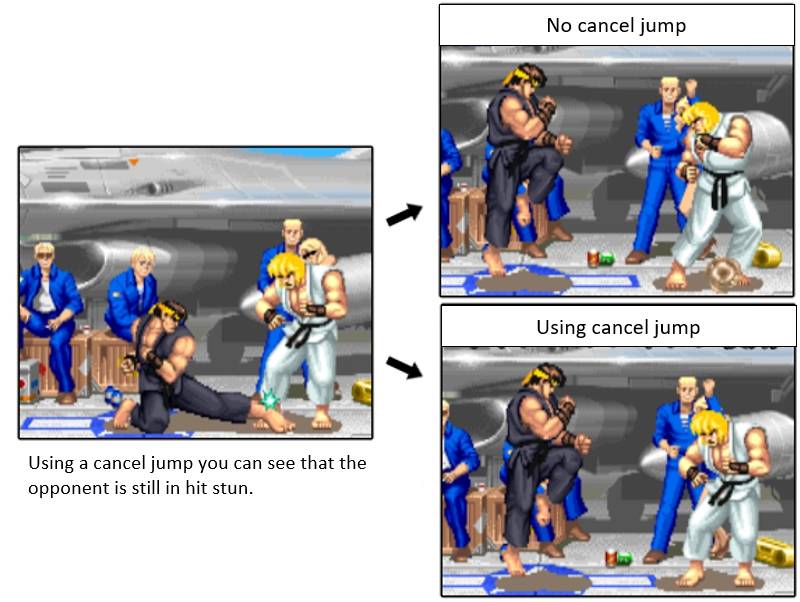
Special Technique: Simultaneous Press (WW to Turbo)
Let's start with a LK that can be renda canceled. LP isn't possible here. If it hits, change your status and hit LK together with a punch button of your choice. For example, standing LK -> down + LK + MP, or crouching LK -> LK + HP. Upon doing this, instead of getting the renda cancel LK as you'd expect, you'll get the punch attack.
 You can get a punch attack out using this kind of cancel.
You can get a punch attack out using this kind of cancel.
This is a technique that utilizes overwriting the renda cancel LK with a higher-priority attack at the status change timing. In SFII, the priority order for normal attacks is LP -> MP -> HP -> LK -> MK -> HK and LP (if you press all the buttons at the same time, you'll get LP), so you can't perform this technique with LP.
Attacks performed with the simultaneous press technique will have the same properties as the renda cancel status change, so if they were originally special move-cancelable that won't change. However, as usual, Old Guile will not be able to cancel the move that comes after the simultaneous press.
Also, the only characters who can take advantage of this are the ones from original SFII up to SFII Turbo (WW, CE, Turbo). In other words, the new characters from Super onwards can't use this technique at all. ...Although there are home versions where it might be possible...
Special Technique: Walking (All)
There are times when the combo would hit if only the hitbox was just a little bigger... In this event, close the distance by walking in the interval between the moves.

If you input a special move command and use the input buffer you can move forward a bit. This is a simple yet essential technique, so be sure to memorize it.
Special Technique: Jump 2-Hit Float (All)
It's extremely rare to use this in combos, but if you input a jump, and then the next hit of your combo registers in the 1F before the character becomes airborne, the hit effect for the second hit will take on airborne hit properties.

Special Technique: Breaking Objects (All)
Objects such as the barrels on Ken's stage and the wooden crates on Guile's stage will break if they come into a character who has taken blowback damage. Hit stop will be applied to the character who comes into contact with the object upon breaking.
Putting this to use, it means that you can get extra hit stop on a character who is floating in the corner, making certain juggle combos possible that ordinarily wouldn't be. In other words, there are some stage-specific combos.
Use everything that's at your disposal. That's the mark of a true craftsman.
Special Technique: Reverse Hit (All)
If you hit your opponent with a cross-up attack, and get your next attack out before your character turns around (with their back facing the opponent), this is called a reverse hit.
Basically, after hitting someone with a cross up, you're left in a pretty sweet position on the ground. In SFII, you can get some pretty sweet reverse hits based on the characters and the conditions.
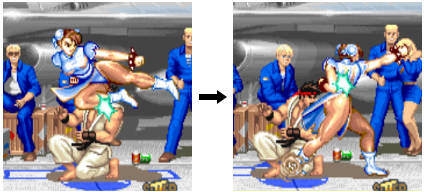 Getting a reverse hit from a cross-up is extremely rare, even among the countless fighting games out there.
Getting a reverse hit from a cross-up is extremely rare, even among the countless fighting games out there.
Based on the characters used and the move used for the cross-up, both characters will be facing the same direction, so performing the move from the perfect position after the cross-up at the fastest speed possible will result in the reverse hit. But there are plenty of moves that won't connect even if you successfully perform the reverse hit technique, so you'll have to try out various different combinations and statuses.
If you cancel the reverse hit move, the canceled move will also be facing in the same direction - this is extremely rare, and very fun. However, your character will turn to the proper direction upon performing renda cancels and other related special techniques (simultaneous press, renda & kara cancels, cancel jump, etc.).
Special Technique: Keeping Back Charge on Cross-Up (All)
If you're holding a back charge and perform a cross-up, you'll lose the charge as the characters change position. However, if you press in the opposite direction at the moment that the characters change position, you can continue to hold the charge.

This is a very difficult technique, but keeping your back charge is something that can be utilized in other games as well, so I think it's good to you give it a try.
Afterword
So, what did you think about this explanation of SFII combo techniques? I wanted to make some articles with specialized tactics per game, so I was really motivated for this one.
I mentioned at the start that this was part of the Street Fighter 30th Anniversary celebration plans. This article is the first, and I'm also planning a 2nd and 3rd entry along these lines, so I hope you're looking forward to reading them.
On behalf of the SF 30th Anniversary and the SF Seminar, see you again soon!
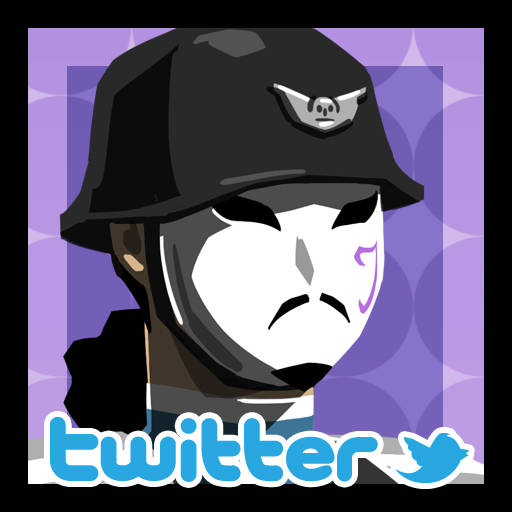
Writer
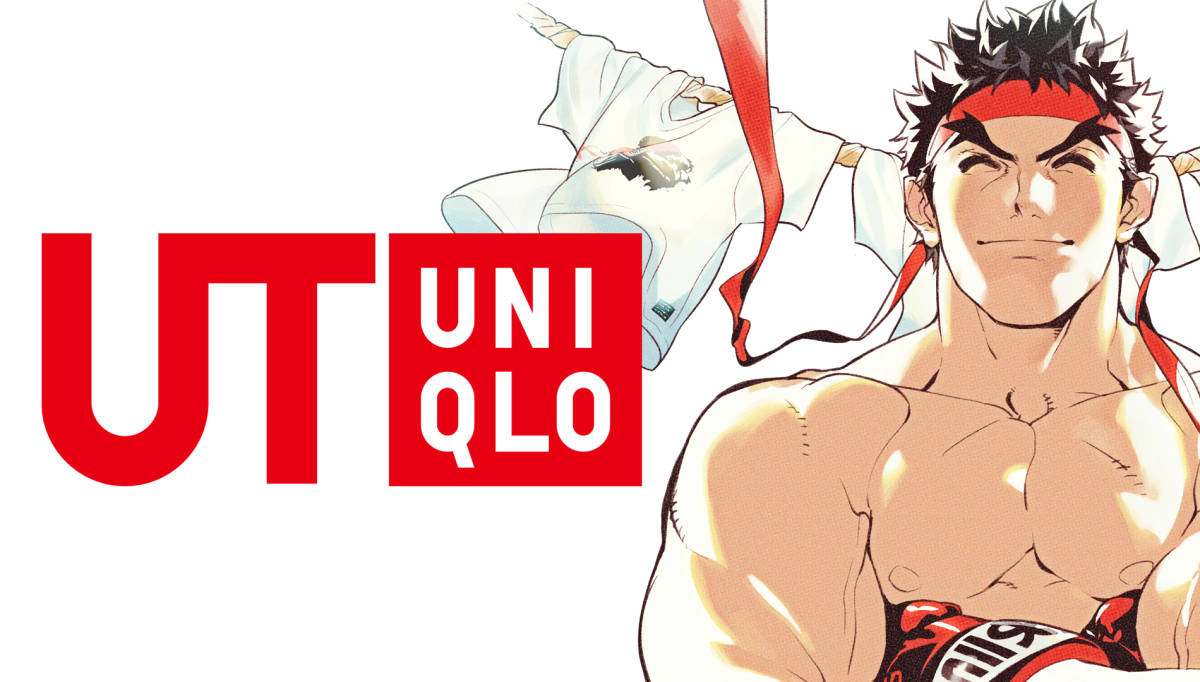
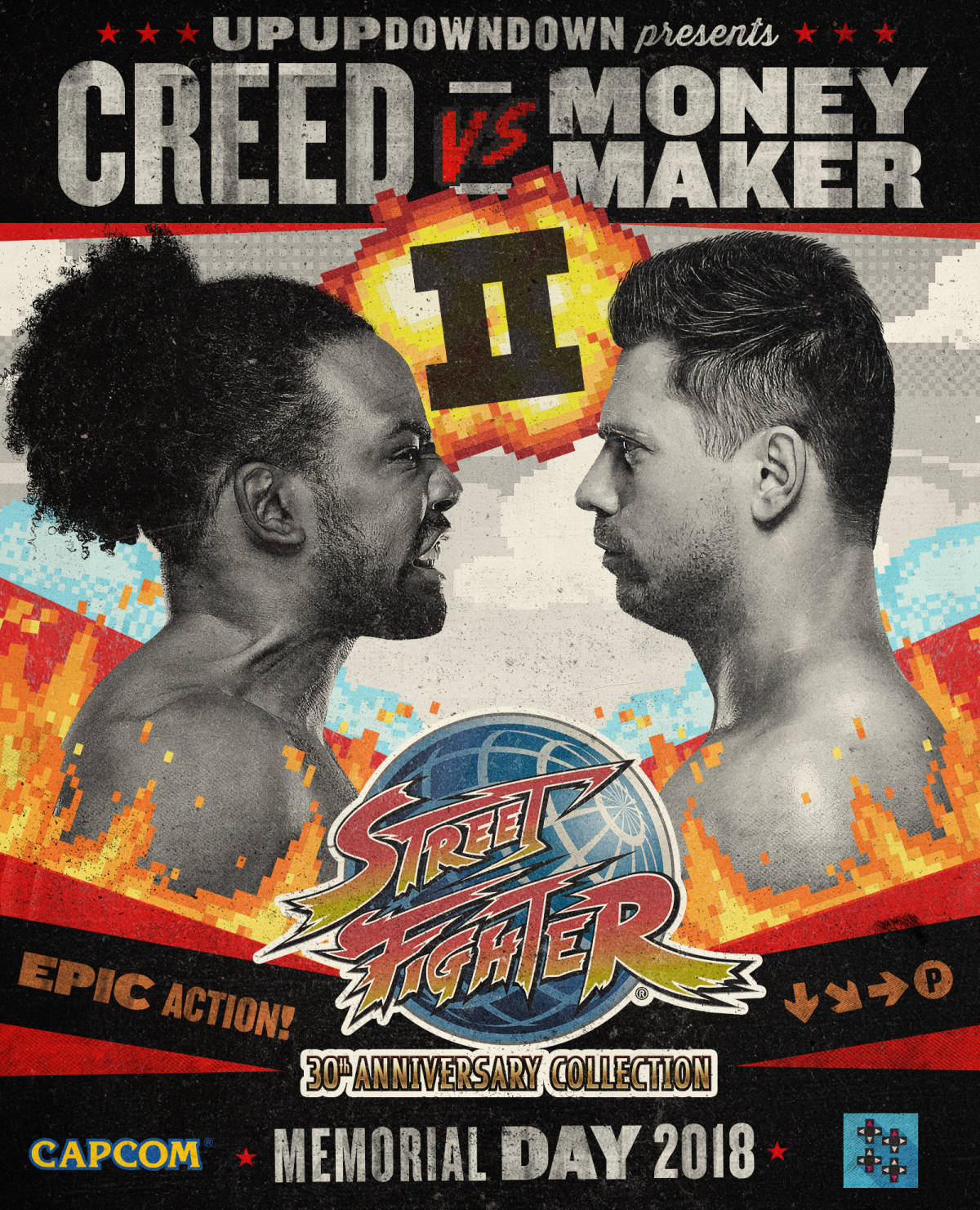
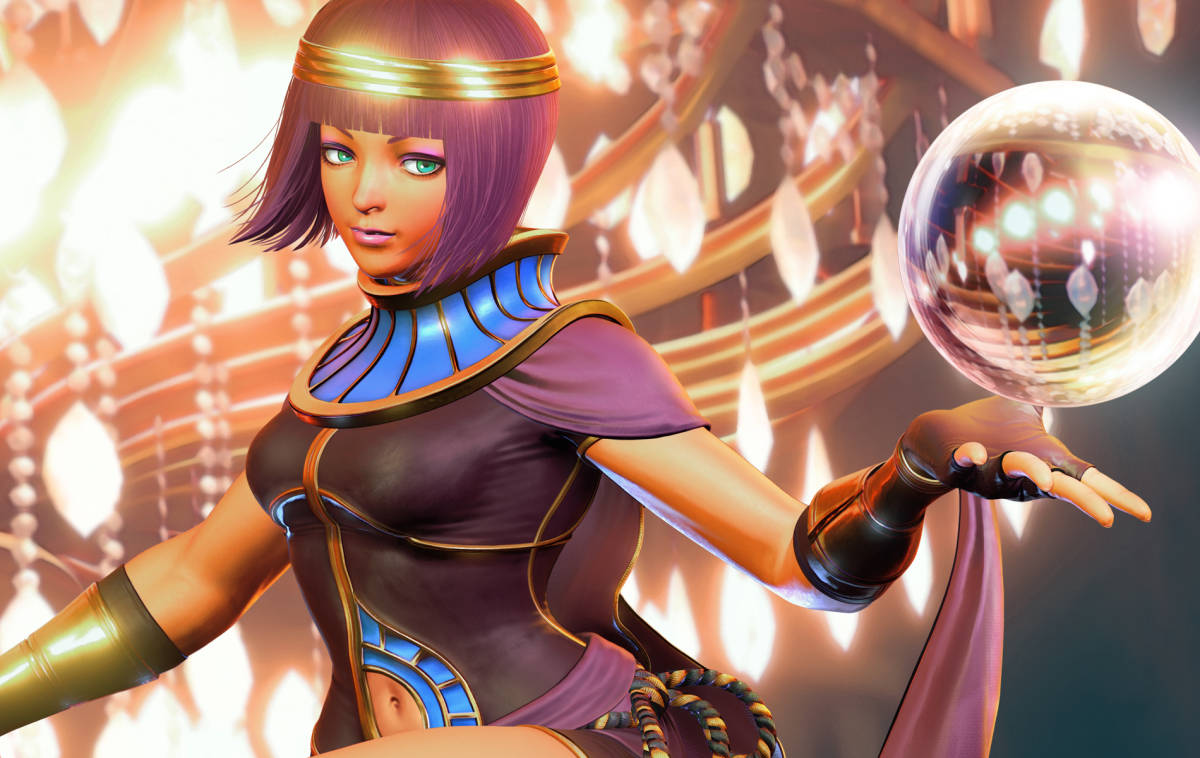

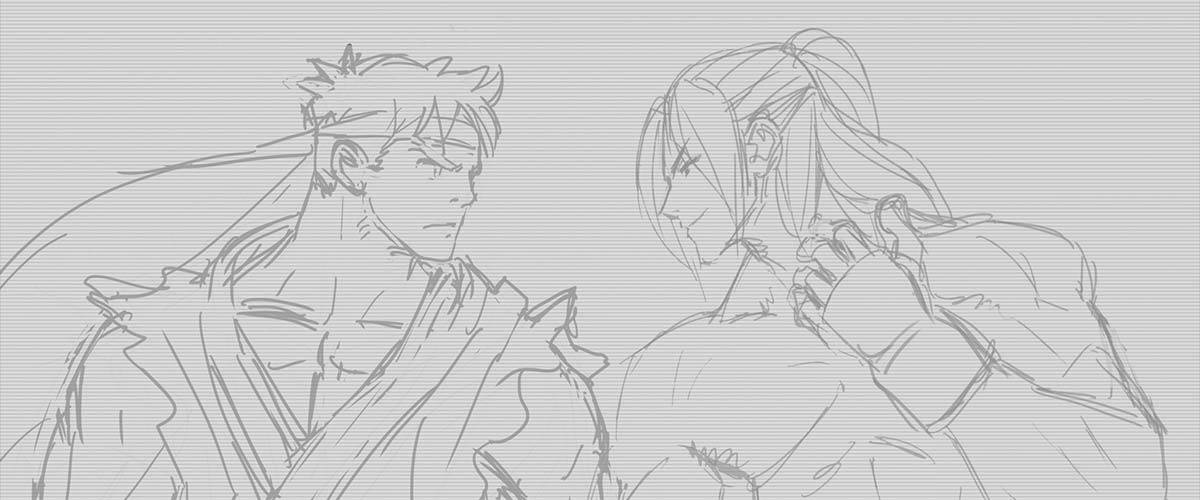

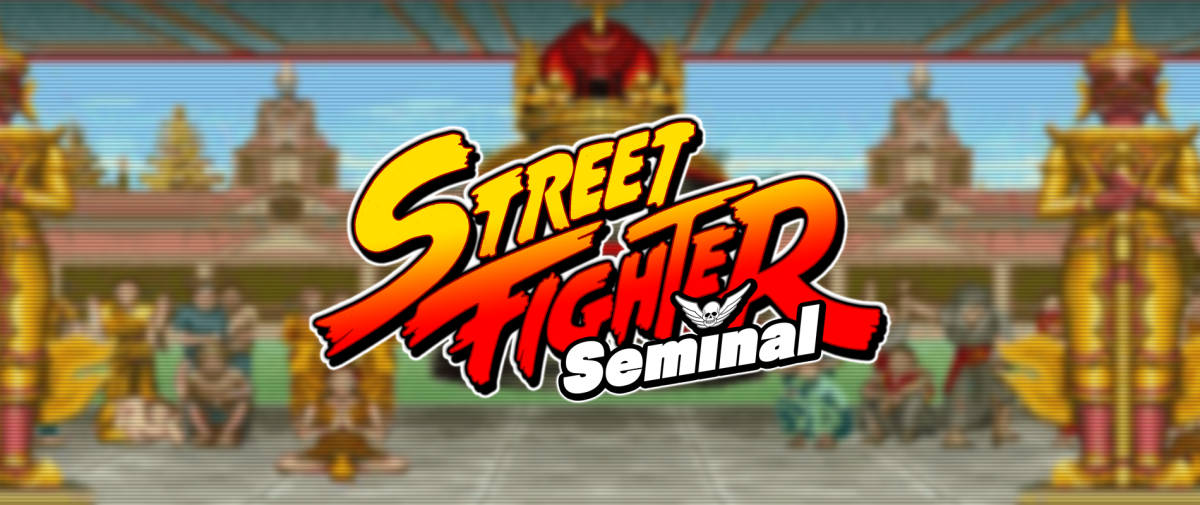


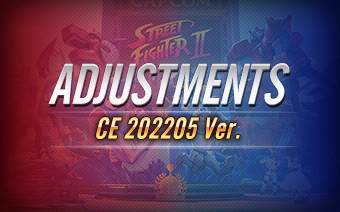
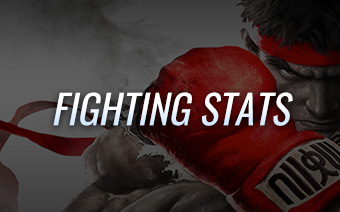
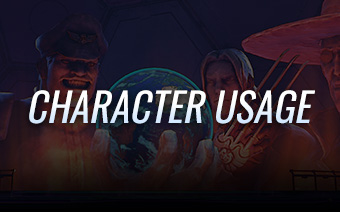
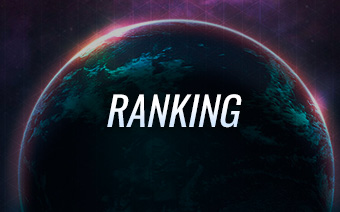
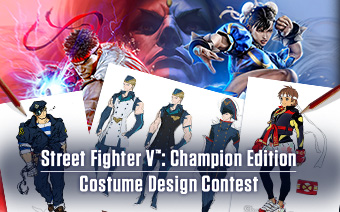
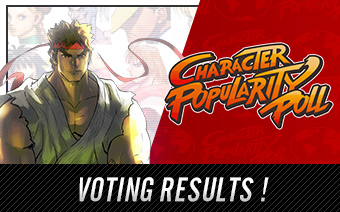






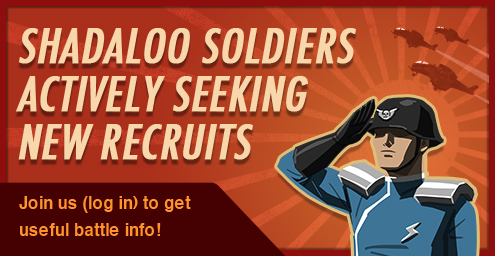



 PlayStation and
PlayStation and 
